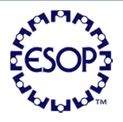By J. Michael Keeling, President - The ESOP Association
 No one knows the details of what might be included in the Congressional tax reform proposal expected this year. But the general talk we hear suggests some potentially good news, and some areas of concern.
No one knows the details of what might be included in the Congressional tax reform proposal expected this year. But the general talk we hear suggests some potentially good news, and some areas of concern.
First the good news: There have been no murmurings about reducing or eliminating any specific law pertaining to ESOPs. And, as of this moment, there has been no talk of reducing the generally favorable tax treatment for ERISA plans—which includes ESOPs, 401(k) plans, defined benefit pension plans, etc.
Now for the potentially concerning news: Tax bills are necessarily complex instruments, often ranging 2,000 or more pages in length. And any provision in a document that size might unintentionally affect ESOPs in a negative way.
Here are a few areas on which members of the ESOP community should keep a sharp eye:
Concern No. 1. One goal of the proposed tax reform is to cut the tax rate for C Corporations to 15 percent. Such a cut might reduce the revenue flowing to federal coffers. How can that revenue be recouped?
One idea would be to require retirement savings plans—and all other tax exempt entities, such as charities—to pay income tax each year on the increase in the value of stock value they hold.
This idea has significant backing: It has been touted by two leading economists from two respected think tanks, and was endorsed recently in an editorial in a major newspaper.
Hmmm. How would ESOPs be treated? If this proposal becomes a key consideration by the House or Senate tax committees, the ESOP community should be concerned.
Concern No. 2. The talk on Capitol Hill indicates total agreement for eliminating the tax deduction for interest paid, and for requiring that all capital expenditures be deductible in the year incurred.
Hmm. What about the principal and interest deductibility of a leveraged ESOP loan? And what about those who offer ESOP loans? Will their businesses be diminished?
Concern No. 3. There are rumors about getting rid of the provisions for tax free re-organizations, under certain conditions.
Hmm. What would such a change do to the 1042 benefit for certain ESOP transactions?
Concern No. 4. Even though President Obama is no longer in office, an anti-ESOP proposal that was in all of his budgets is still hanging around. That proposal would limit, or basically repeal, IRC 404(k), which permits the deduction of dividends paid on ESOP stock. This feature is used primarily by large, publicly traded corporations.
The fact that all of these issues are being considered should prompt the ESOP community to be aware and on its toes. These, or some other changes we haven’t even heard of yet, have the power to reduce the benefit of sponsoring an ESOP for the employees, the company, and the exiting shareholder.
Stay tuned: I predict more specifics by the end of April.
International ESOPs
The ESOP Association’s vision is for the ESOP model we enjoy in this country to serve as a model that can positively influence all countries, organizations, and employees around the globe.
As I travel around, I hear from many people who assume that other nations—particularly in Europe—have vibrant employee ownership schemes, promoted by national laws.
But that’s not truly the case.
The ESOP model we know and love exists only in the United States. No other nation has laws that sanction using any significant amount of company stock in a retirement savings plan.
It is true that some private companies in Europe and Asia have worker owned co-ops, but these are not numerous.
For example, most employee ownership in Europe is in public companies, and the average ownership is 3.2 percent—and has increased less than one percent over the past decade.
Some folks here in the U.S. cite the Mondegan in Spain’s Basque province as a model for others in Europe to emulate. Employee ownership groups in Spain have told me, in no uncertain terms, that the Mondegan is not a model to be emulated by companies in Spain.
Another source of confusion is that there are quite a few articles about ESOPs in Southeast Asia, India, and China. But in those countries, the ESOP acronym stands for something else entirely: employee stock option plans. And there is evidence that many of those plans are solely for top tier and mid-tier executives.
There also was a desire at one time to have Communist nations in Central Europe and Eastern Europe privatize government owned businesses, turning them into companies with significant employee ownership. But those efforts fell apart as employees— who were immediately empowered to sell their shares in the name of “real” ownership—frequently sold those assets in a manner of months. Many of those shares were purchased by oligarchs, and thus eliminated significant employee ownership in Communist countries.
These observations are not meant as complaints or criticisms of employee ownership in other lands. But they do show that protecting the U.S. ESOP model of employee ownership is a way to ensure employee ownership is “real” and “meaningful,” and provides an example worthy of consideration.
Not all features of the U.S. model may work well overseas, but some may. And if other nations identify and emulate the features best suited to them, employee ownership will expand worldwide.
